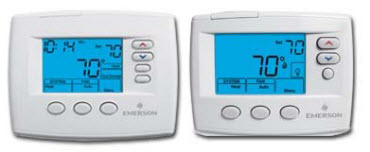The air inside your home is often more polluted than the air outside. Sometimes it’s even dirtier than the air near highways or industrial plants. You may think that an air cleaner (or “air purifier”) is the solution, especially if you have allergies or asthma. Manufacturers of such products want you to think so, too.
Machines vs. pollutants
There are two general categories of indoor air pollutants. Particulate matter consists of microscopic particles suspended in the air, such as dust, pollen, animal dander, dust mites andmolds. Then there are gaseous pollutants, produced by paints, varnishes, cleaning products, gas and wood stoves, and new carpets, for example. Some pollutants— like tobacco smoke—have both particulate and gaseous components.
A good air cleaner should be able to remove dust and smoke particles, as well as some animal dander, pollen and molds. But no home device, no matter how sophisticated or expensive, can remove all pollutants. For one thing, many large particles (such as from dust mites and pollen) settle on surfaces and don’t get filtered. Some air cleaners contain activated charcoal or other materials that remove gaseous pollutants, but they eliminate only a limited number of them, plus they cost a lot and the filters have to be replaced frequently. Air cleaners that use ultraviolet (UV) light to “kill germs” may not be so effective, either—most don’t provide sufficient UV exposure, and some bacterial and mold spores are UV-resistant.
Air cleaners for your health?
If you’re hoping that an air cleaner will prevent allergy or asthma attacks, you may be disappointed. Though some research has found small improvements in asthma symptoms among people allergic to pets, for instance, studies have been mixed and, overall, unimpressive. According to the EPA, the devices may help reduce levels of some small airborne allergens, but that doesn’t mean they will necessarily reduce respiratory symptoms, especially in people who are most sensitive. A better bet is to prevent indoor air pollution in the first place and take other steps to deal with allergies.
Nevertheless, if you or someone in your home has allergies or respiratory disease, a good air cleaner may be worth the cost if it achieves even a small improvement.
Two basic ways of cleaning the air
- Mechanical cleaners draw air through a filter to capture particles. HEPA (high-efficiency particulate air) filters remove dust particles and potential allergens best, trapping 99.97 percent of all particles 0.3 microns in diameter or larger. Viruses, many bacteria and other smaller particles can pass through, however.
- Electronic air cleaners include electrostatic precipitators (which charge the airborne particles so they stick to a metal plate) and ionizers (which cause particles to be deposited on nearby surfaces). Ionizers can soil walls, curtains and furniture, and the particles can become re-suspended when disturbed. What’s more, all electronic models can generate ozone as a byproduct, and some air cleaners do so intentionally (called “ozone generators”), claiming that ozone effectively removes odor-causing chemicals and microorganisms (not true at the amounts of ozone generated). Ozone itself can irritate the lungs and worsen respiratory problems. It can also combine with other household pollutants to form dangerous reaction products, like formaldehyde. Some air cleaners are hybrids of the two technologies, and some additionally have UV features or special filters to remove some gaseous pollutants, as mentioned above.
. . . and two basic types of effective air cleaning systems
- Central filtration. A professionally installed system is best if your home has forced-air heating and cooling systems, but it’s also most expensive (over $1,000). A less expensive—but less efficient—alternative is to replace your regular furnace filter with medium- or high-efficiency filters.
- Room air cleaners. You can buy portable electronic models or ones with mechanical filters ($50 to $300 or more)— or units that combine the various technologies. Machines with fans are generally much more effective, but can be noisy.
Verify before buying
The verification seal from the Association of Home Appliance Manufacturers(AHAM) means that a room air cleaner meets standards for removing tobacco smoke, dust and pollen, based on a measure called the clean air delivery rate (CADR). According to the EPA, many AHAM-certified air cleaners do well with small particles, but most don’t have high enough CADR to effectively remove large particles such as pollen and dust mites in most rooms. And they won’t remove all of the compounds in tobacco smoke.
Words to the wise
Air cleaners may be useful in some circumstances, though they don’t ensure good air quality. Which one is best depends primarily on the pollutants you want to remove. Consider also the size of your room, costs, ease of maintenance and noise levels. We generally recommend mechanical air cleaners with high-efficiency filters over electronic ones. In particular, avoid ozone-generators; they are often described using code words for ozone such as “activated oxygen,” “superoxygen” or “mountain fresh air.” The EPA offers in-depth information on home air cleaners. Another resource isConsumer Reports.



